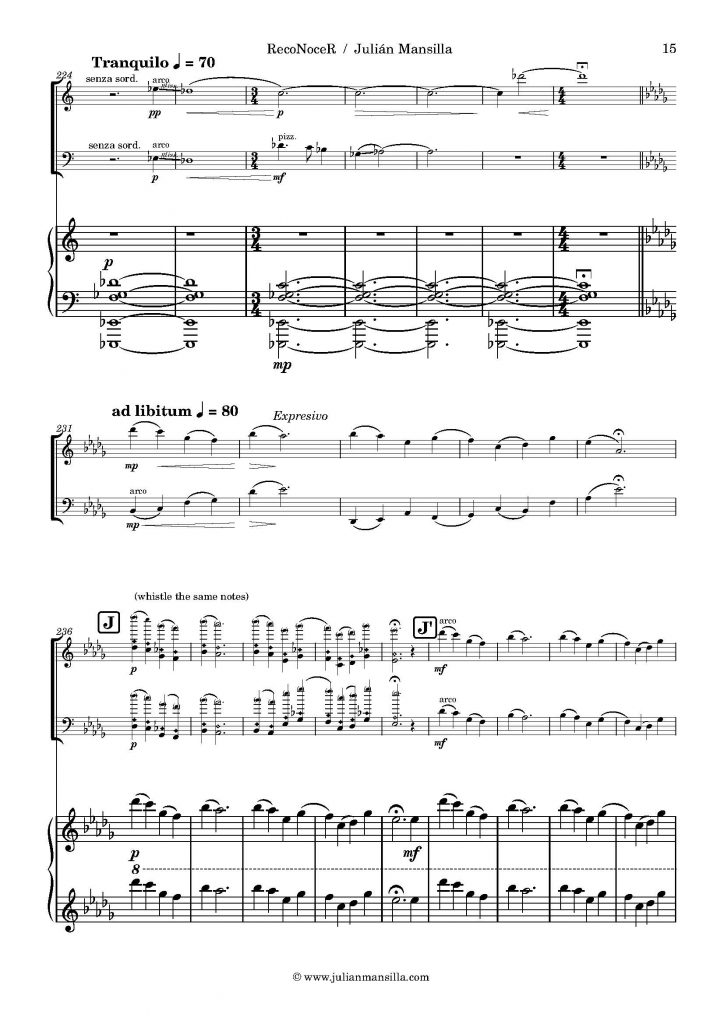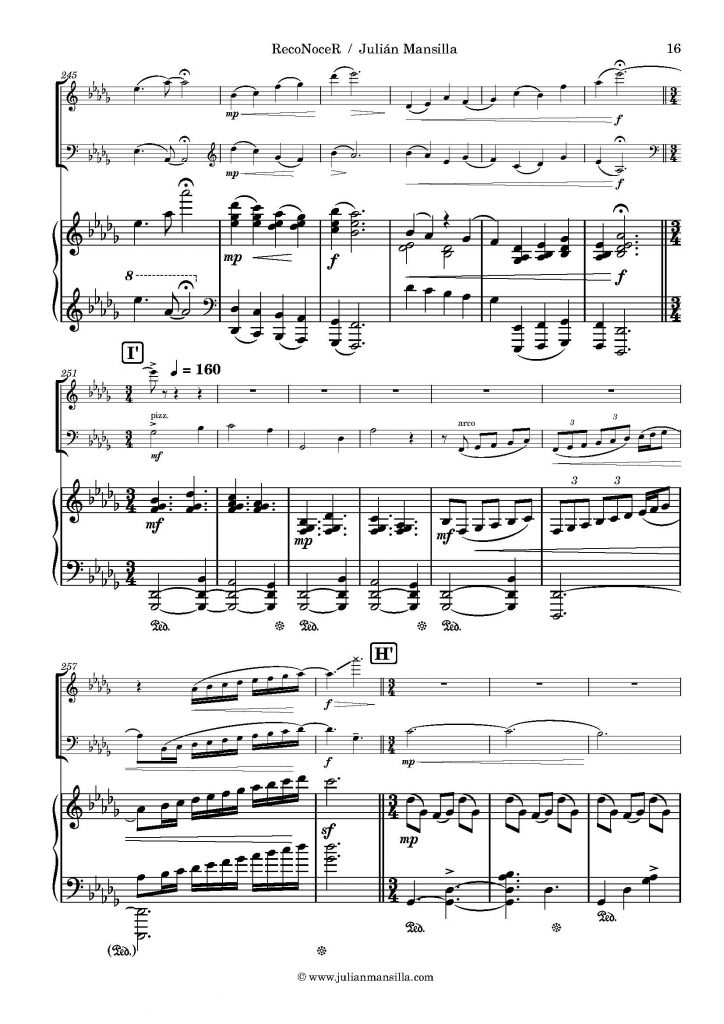RecoNoceR Chiasmatic conversion of Alma (2020/2021) (Piano, Violin & Cello) Commissioned by The Barlow Endowment for Music Composition at Brigham Young University –
The work was premiered in BYU Provo-Idaho (USA) during 2021 by The Uinta Trio – (Nicole Pinnell Monte Belknap & Michael McQuay)
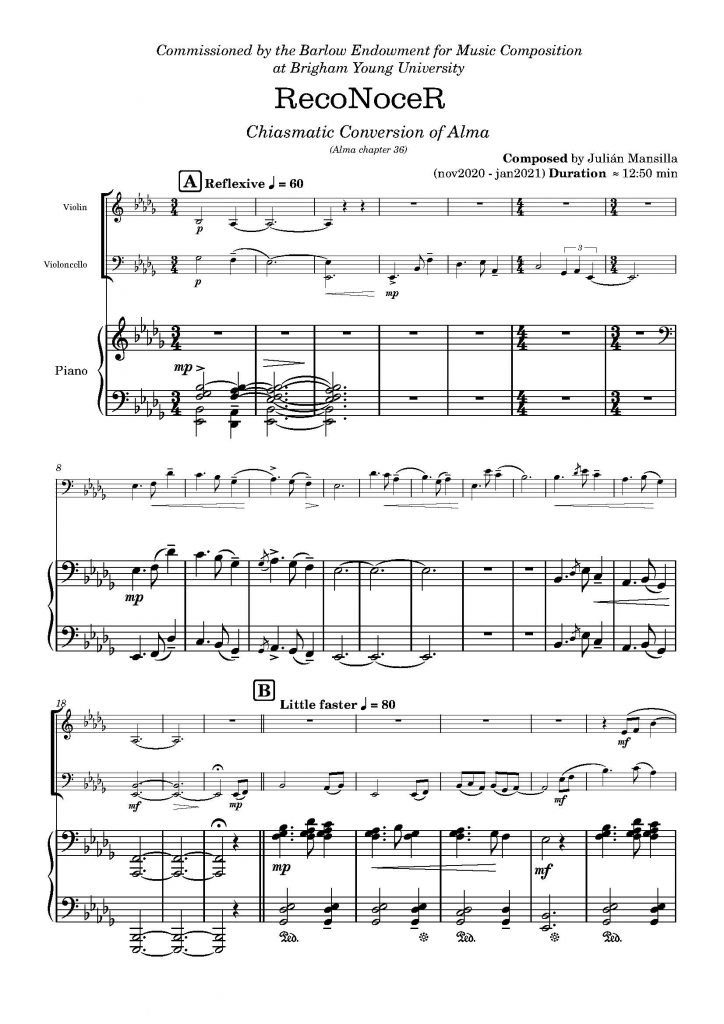
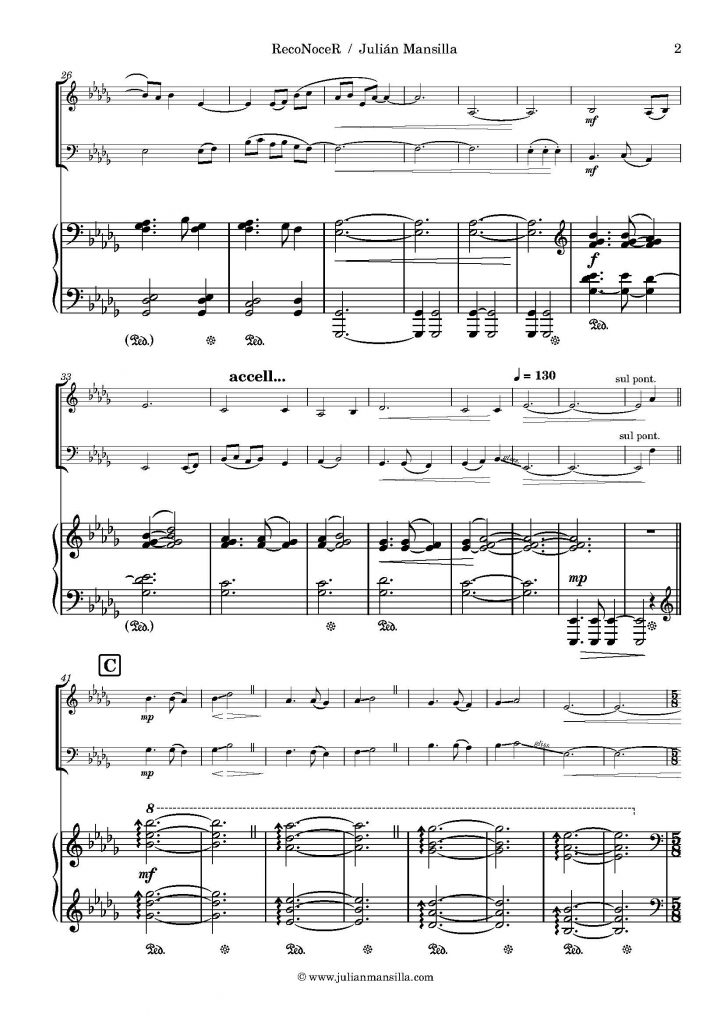
ReconNoceR (Recognize) is a musical work based on the story of the prophet Alma’s conversion to Christianity within the writings of the Book of Mormon. The story joins three generations, since Alma tells his son Helaman, but at the same time, mentions the influence that the teachings of his father had.
The story is written in the form of a great Chiasmus, which is a grammatical structure where there is a mirror-like parallelism between the concepts or words that seek to be transmitted and the most important idea being repeated in the center. This literary device is present in various ancient writings, including the Egyptians and in the Bible itself. John Welch was the great discoverer of chiasmus in the Book of Mormon, thus broadening the understanding of many passages and shedding light on the authenticity of the book as ancient scripture.
I used the RecoNoceR palindrome to emphasize the symmetrical character of the work from the musical form. In some cases, this symmetry turns out to be inverse, as happens in moments when ideas such as “Pains of a damned soul” (G) are opposed to “Joy as exceeding as was the pain” (G ’) among others. In those cases, the musical material used is the same, but with modifications that seek to identify with the emotion opposite to the original.
At the same time RecoNoceR refers to its symbolic content, since the story of the conversion and change of the prophet Alma begins with the recognition of his mistakes and then remembering how to find the remission. The appearance of an Angel who rebukes him on the way leads him to an internal abyss that will then lead him to review his memory: “I remembered also to have heard my father prophesy (I) unto the people concerning the coming of one Jesus Christ, a Son of God, to atone for the sins of the world. the coming of a Jesus Christ, a Son of God, to atone for the sins of the world. ” (J). Like the story of the prophet Alma, our own changes begin with that very word.
This work is dedicated to my parents who helped me to recognize the important things in life.
Julián Mansilla January 2021
Quotations of concepts extracted from the chiasmus that coincide with the rehearsal marks that musicians will use as a guide to perform:
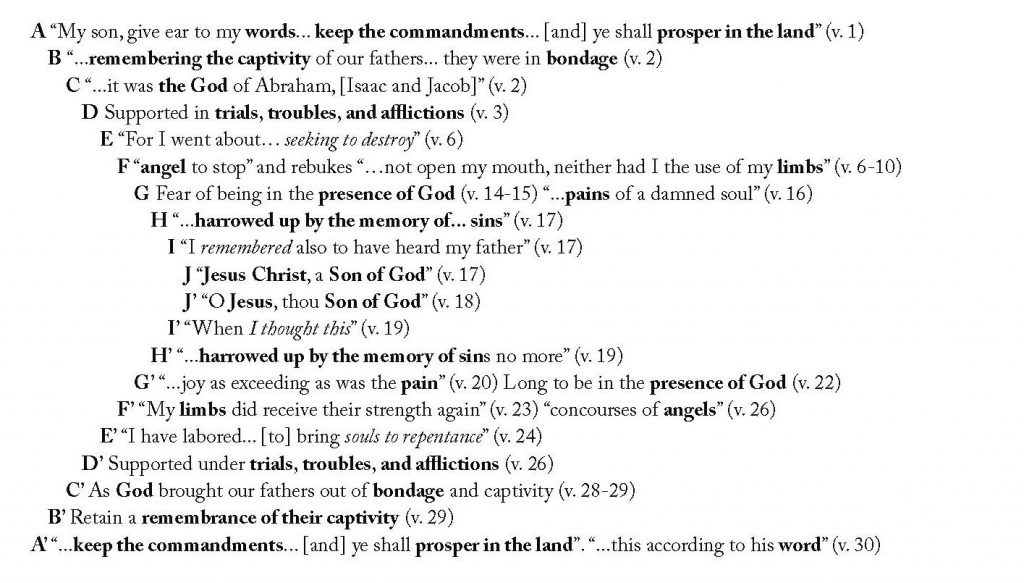
Notes on the compositional process of the work RecoNoceR by Julián Mansilla
In the work ReconNoceR sought to reflect feelings or moments written in the history of Alma 36, creating the obligation to sustain the chiasmatic form in the musical form, with the challenge that sometimes this does not work at all as a sound result.
In some moments of the work I decided to use the instruments as characters that told the story. For this reason, the Cello represents in several passages the voice of Alma the father and also in others Alma the son. On the other hand, the violin seeks to represent the Angel reprimanding (F), as well as the heavenly along with the cello through harmonics (F’). The use of harmonics seems to me an interesting tool to represent the divine or spiritual, since they are sounds that are always present, although they seem more hidden or difficult to find both for the musicians and for the listener, but at the same time their presence is clear once you recognize them.
In the work as well as in the chiasmus there is a moment of contrast or opposing concepts in the letters G-H / G’-H’ G “Fear of being in the presence of God (v. 14–15) “Pains of a damned soul” (v. 16) H ” Harrowed up by the memory of sins ” (v. 17) with H’ “Harrowed by the memory of sins no more ” (v. 19) G ’ “Joy as exceeding as was the pain” (v. 20)” “Long to be in the presence of God” (v. 22)
During those passages I set out to construct the music as a puzzle, first creating a musical idea that would generate sorrows and tribulations and then using that same idea and turning it into something opposite. In the tribulations section I ask the violin and the cello to play with their muted strings (con sordina) since at that moment Alma was immobile and unable to speak.
When creating the opposite idea of G’-H’I tried to preserve the rhythms and numbers of measures and I focused on making melodic changes as if it were a note by note sculpture, seeking to turn negative music into something positive. During that search I found that while I was doing a mental process of running notes up or down, a small passage from “Jesus, joy of men’s desiring” by J S Bach was left without looking for it in the right hand of the piano. Upon discovering that, my first impulse was to eliminate it, but then the idea came to my mind that this coincidence was not accidental since finally that passage needed to represent the sweetness and joy of being redeemed by Jesus. This is how a small one-measure quote appears in the work that is repeated as a bridge as a tribute to a great composer and his encrypted message about Jesus. I found it interesting the relationship of how a text can inspire one to a music and at the same time quote other music that becomes a text.
In the central part of the chiasm (J), the expression “Jesus Christ, a Son of God” (v. 17) generated an intrigue in me how to represent him, but fortunately, the concept of unity that Jesus mentions among his teachings came to mind on several occasions. The idea of being one with the Father and one with us. Also the idea of perfection manifested in the achievement of being one with oneself. That is why the center of the work contains a great unison in which all the instruments participate including the whistle of one of the musicians.
